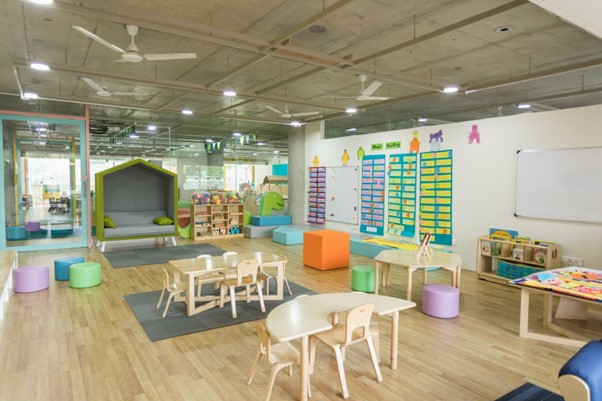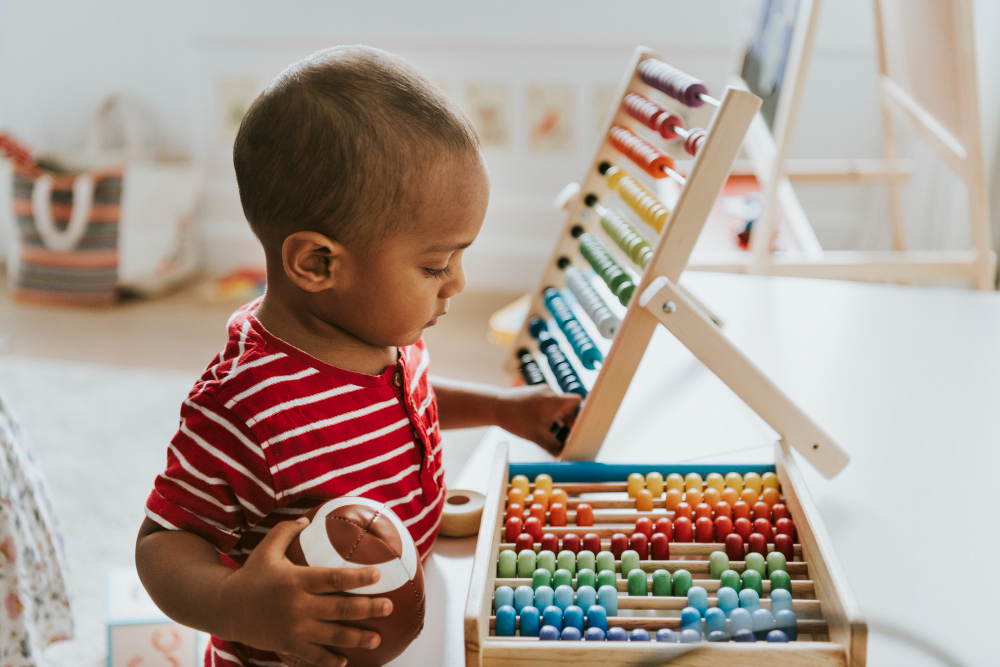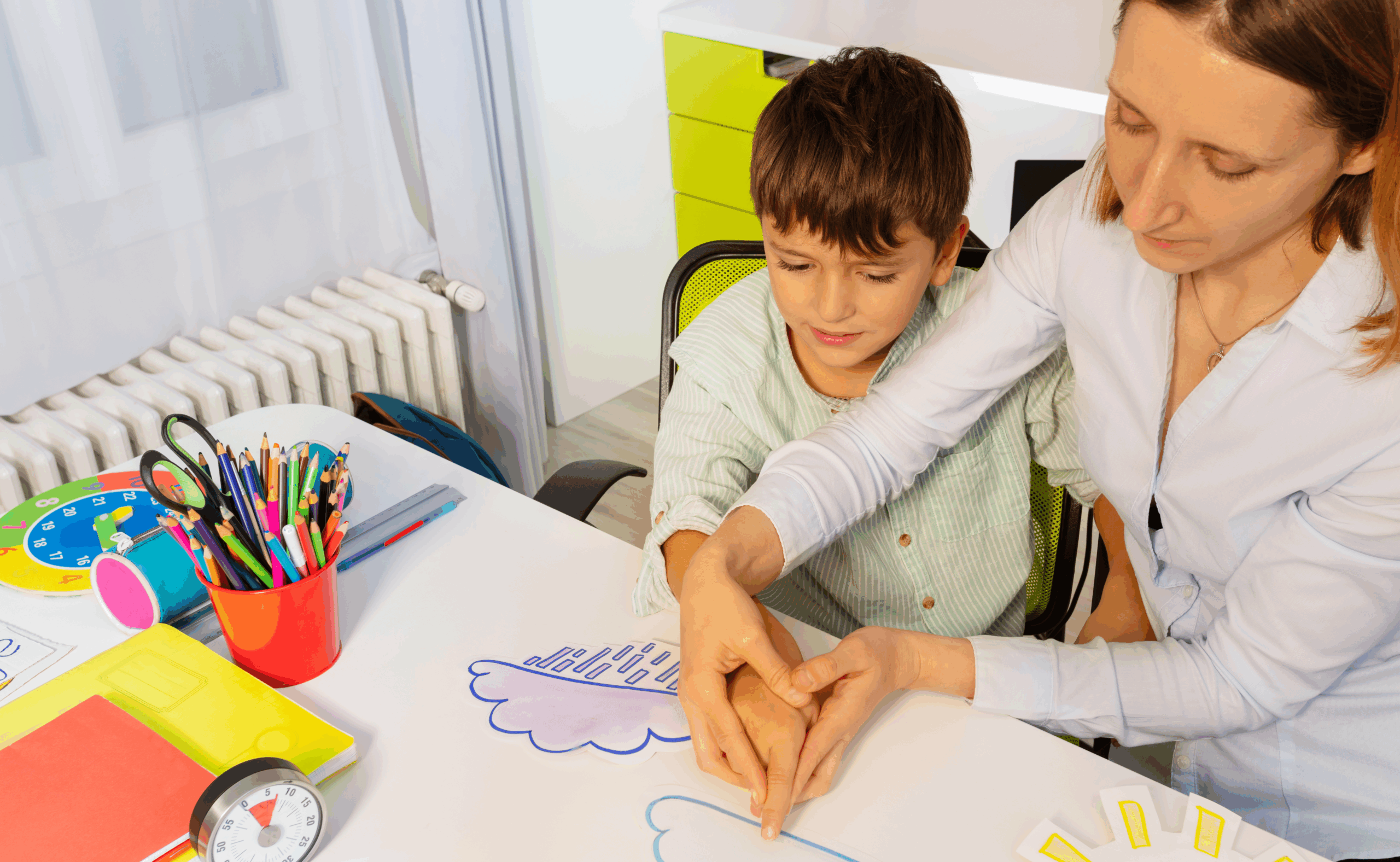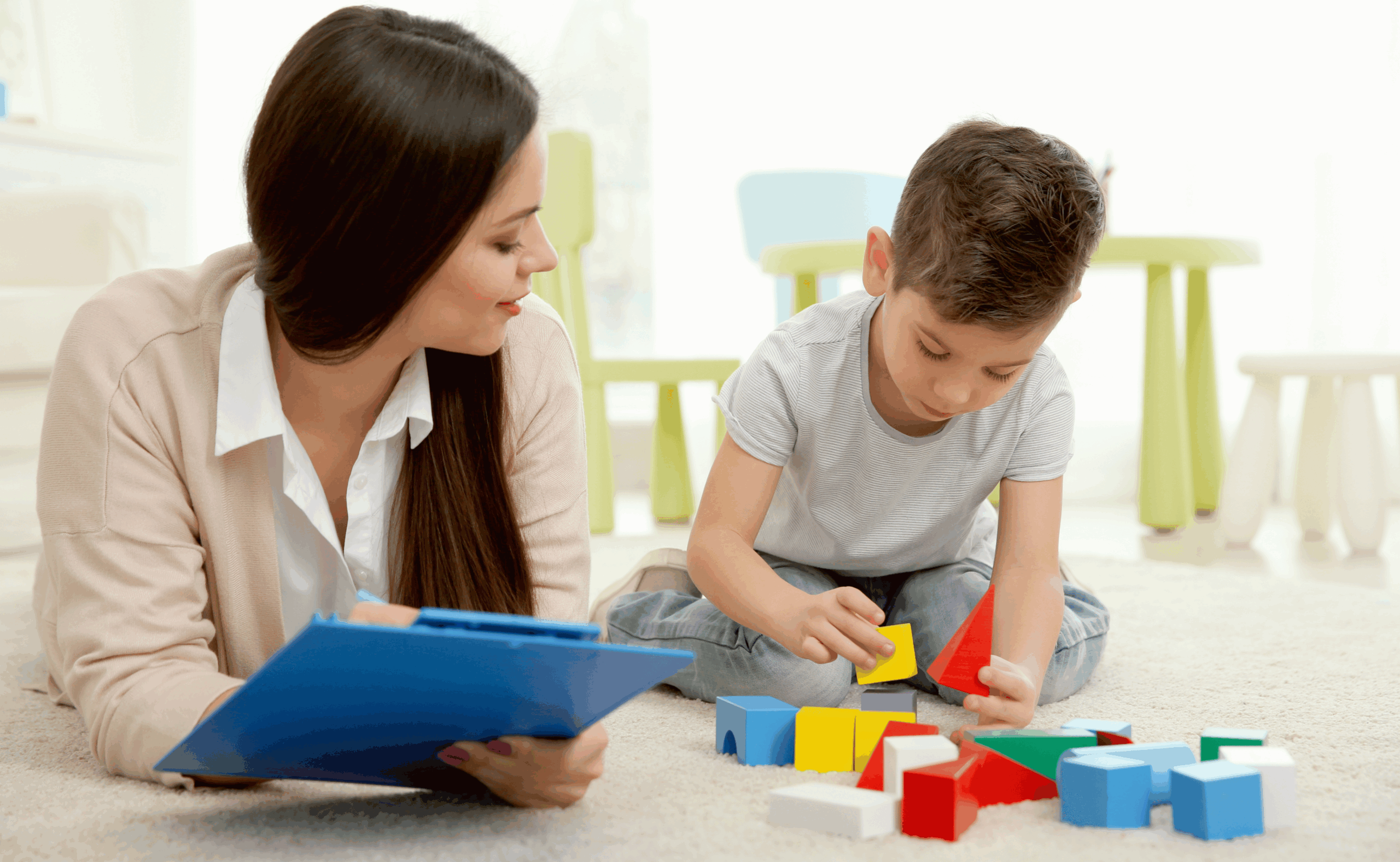Next to parents, daycare teachers are often the most important caregivers in a child’s life. They play a crucial role during the formative years: not only do they provide a safe and nurturing environment for infants, toddlers, and pre-k children, but they also help teach them the skills they need to succeed in school and in life.
Most importantly, their impact also follows the kids home, supporting parents in their efforts to rear happy, healthy, and successful kids.
As a parent, you may be wondering how a teacher can best help your child, and in turn, how you can support your child’s teacher and follow through at home. First, it’s important to understand how a daycare helps students succeed in the first place.
Key Takeaways:
- Daycares tailor their approach to a child’s developmental needs.
- Parents can amplify the benefits of daycare by adapting their strategies.
- As a parent, it’s important to actively participate in your child’s daycare experience.
What do infants learn at daycare?
Infants don’t just sleep, eat, and have someone watch over them at daycare. Your child’s teachers help your baby in several fundamental ways, such as:
Providing meaningful interaction
During the first few months of life, babies learn best through one-on-one interactions with a caregiver. These special bonds help infants feel secure and loved, which in turn helps them learn to trust people and feel comfortable exploring their surroundings.
At daycare, caregivers provide plenty of opportunities for infants to develop these trusting relationships. They talk, sing, and coo to babies, gently hold and rock them, and play games that stimulate their senses.
All of these activities help infants develop physically, emotionally, and cognitively.
Frequent check-ins
Checking in with infants frequently helps them feel secure and cared for. When an infant knows that a caregiver is nearby, they feel free to explore their surroundings and try new things.
At daycare, caregivers usually check in with infants every few minutes to see how they’re feeling and what they need.
They also keep a close eye on infants during mealtimes, naps, and diapering changes to make sure they’re comfortable and happy.
Routine
Infants as young as a month old can start to develop a sense of routine. Knowing what comes next – breakfast, playtime, lunch, naptime, etc. – helps infants safe and more comfortable.
That’s why daycares try to stick to a set schedule each day. For example, lunchtime might always be followed by naptime. This doesn’t just help babies feel secure – it also helps establish good habits that will last a lifetime.
A focus on social and emotional development
In addition to physical care, infants also need plenty of opportunities to develop emotionally and socially. From birth to 3 months, this means plenty of eye contact, cuddling, and physical affection.
As infants get older, they’ll start to engage in more back-and-forth social interactions, such as babbling and making faces.
Daycare teachers encourage these social interactions by talking, singing, and reading to infants. They also provide opportunities for older infants to play with each other under close supervision.
Learning and identifying infant body language
Caregivers also spend a lot of time learning to read and respond to infant body language. For example, an infant who is arching their back and crying might be hungry, while an infant who is turning their head away and fussing might be overstimulated.
Being able to read and respond to these cues is important because it helps caregivers provide the best possible care for infants. It also helps them develop a strong bond with each infant in their care.
What do toddlers learn at daycare?
During the toddler years, kids learn best through hands-on exploration and play. That’s why daycare and teaching strategies during this age provide plenty of opportunities for toddlers to explore their surroundings, play with friends, and try new things.
In addition to physical care, the best daycares also prioritize helping each child develop positive attitudes and relationships with other students.
For example, they encourage toddlers to practice sharing, taking turns, and solving problems. They also help toddlers develop their language skills by talking, reading, and singing with them throughout the day.
Specifically, top daycares use the following strategies to help toddlers learn and grow:
Free play as part of the learning process
Free play is unstructured, but it’s a crucial part of a child’s classroom experience. It’s when they can let their minds and imaginations run wild as they explore their surroundings, interact with friends, and try new things.
At daycare, free play typically happens during the outdoor time and indoor time. Outdoor time might include activities like chasing bubbles, riding tricycles, or climbing on the playground. Indoor time might include free play with toys, exploring the sensory table, or reading books.
Regardless of the activity, toddlers get to decide what they want to do during free play. This helps them develop a sense of autonomy and independence.
Related Read: How can I (properly) play with my child? The Different Stages of Play
Scheduled activities
In addition to free play, most daycares also have scheduled activities. These are usually short (15-30 minutes) and focused on a specific goal, such as learning the alphabet or practicing counting.
Scheduled activities give toddlers a chance to learn new things in a structured setting. They also give caregivers a chance to assess each child’s individual needs and progress.
Do take note of the duration: too long and the toddlers will get bored, too short and they won’t have time to fully engage in the activity.
Age-appropriate activities
The activities that daycares provide should be developmentally appropriate for the children in their care. This means that they should be challenging enough to engage toddlers, but not so challenging that they get frustrated.
For example, a good activity for 3-year-olds might be singing songs and acting out stories. This helps them develop their language skills and learn about emotions.
A good activity for 5-year-olds might be playing board games or completing puzzles. This helps them develop their fine motor skills and learn to follow rules.
Age-appropriate activities are important because they help toddlers learn and grow at their own pace.
Related Read: Spatial Relationship and Early Child Development: How to Improve Spatial Intelligence of Infants
A balance of individual and group activities
At daycare, toddlers have the opportunity to participate in both individual activities and small groups.
Individual activities are those that each child does on their own, such as reading a book or working on a puzzle. These activities give toddlers a chance to work at their own pace and focus on their individual interests.
Group activities are those that all the children do together, such as singing songs or playing games. These activities give toddlers a chance to interact with their peers and practice social skills.
Positive reinforcement
Ever seen a toddler with a star on their shirt or a sticker on their hand? That’s positive reinforcement, and it’s a common technique that daycare teachers use to encourage good behavior in littler learners.
When toddlers behave in the way that their caregivers want them to, they’re rewarded something nice. This can be intangible (such as praise) or tangible (such as stickers). The reward itself isn’t important – what makes a big difference is the positive approach to their small and big wins.
Consistent routines
A toddler’s typical daycare routine might include activities like free play, scheduled activities, lunch, nap time, and more free play before going home.
On the surface, it may seem like a simple schedule. However, toddlers actually learn a lot from following it every day.
For example, toddlers can learn self-discipline, regulating their emotions, and patience just by having to wait for snack time instead of getting it immediately after they ask for it.
Having a set nap time also makes rest a consistent part of their day, which can help them develop healthy sleep habits.
What do preschoolers learn at daycare?
While toddlers and preschoolers are both young children, they are at different stages of development. Most 3- and 4-year-olds are in the process of learning to read and write. They might also learn simple math, such as counting and recognizing numbers.
This is also the time right before the kindergarten school year, so daycares also start helping pre-k children with common tools that help students succeed. This may include time management, self-efficacy, memorization, encouraging their unique learning styles, and other skills that support school success.
In addition to academic skills, preschoolers are also starting to develop more complex social and emotional skills. For example, instead of just playing side-by-side with other children, they might start to engage in cooperative or even competitive play.
To properly provide support, daycares also adjust their curriculum and care strategies accordingly.
8 Daycare Strategies Parents Can Use at Home
Children can have a wonderful and enriching experience at daycare, but it becomes more powerful when parents follow through at home. Here are some of the best daycare strategies you can try:
1. Establish a consistent routine.
Children benefit from routine regardless of their age. Whether you have a baby or a preschooler, try to stick to a regular schedule as much as possible. It doesn’t have to be extremely rigid: some flexibility is fine, but make sure the overall structure of your child’s day is predictable.
2. Encourage your child to try new things.
At daycare, children are constantly being exposed to new experiences. You can continue this at home by encouraging your child to try new foods, activities, and games. It’s okay if they don’t like everything they try, but it’s important that they have the opportunity to explore.
3. Make rest a regular part of their life.
Ever wondered how daycares get kids to nap so easily? It’s because they have a set time for naps, and they stick to it. They also make sure that all of the activities help kids get ready to rest.
For example, active playtime is scheduled in the morning, then a nap is scheduled right after nap time. This way, kids are happy, tired, and full when it’s time to sleep.
At home, you can try a similar approach by making sure your child has a regular bedtime and quiet time during the day.
4. Create opportunities for social interaction.
One of the most crucial advantages of sending kids to daycare is exposure to other adults and children. This teaches them so many things, from how to communicate effectively to how to resolve conflict, share, give way to others, be kind, and express themselves.
You can recreate some of this social interaction at home by joining a playgroup or taking your child to the park on a regular basis.
5. Encourage independence.
At daycare, children are encouraged to do things for themselves, such as put on their own coats and shoes or pour their own drinks. This helps them develop a sense of independence.
You can support this by giving your child some simple chores to do, such as setting the table or putting away their toys. As they get older, you can gradually increase the level of difficulty, like not hovering over your child’s homework so they can figure it out on their own.
6. Study what’s developmentally appropriate for your child.
At home, you can continue to support your child’s development by engaging in activities that are appropriate for their age and stage.
For example, if you have a 3-year-old, you might read stories together, count objects around the house, or practice writing their name. If you have a 4-year-old, you might do additional activities such as singing songs with hand motions, playing simple board games, or building towers out of blocks.
The more you understand what’s developmentally appropriate for your child, the better you can support their growth.
7. Use positive reinforcement.
At daycare, your child’s teachers will often praise them for good behavior. They might get a sticker or a stamp when they do something well. This isn’t just a cute way to make kids feel good: it’s actually a very effective way to encourage the desired behavior. It’s also particularly effective for struggling students or kids who have trouble learning what they need.
You can continue this at home by using positive reinforcement with your child. For example, you might give them a hug or a kiss, say “good job,” or give them a special treat to recognize your child’s efforts.
8. Be involved in your child’s classroom or daycare.
Last but not least, one of the best ways to make sure your child is getting the most out of daycare is to be involved in their care. This means more than just dropping them off and picking them up on time.
It means getting to know the staff and your child’s teacher, visiting the daycare on a regular basis, and participating in activities. It also means being open to communication and feedback from the daycare.
Final Thoughts
The bottom line is that daycare can be a great way to support your child’s development, but remember that it’s just one piece of the puzzle. Don’t let the lessons they learn to stay in the classroom – make sure to incorporate them into your child’s home life as well. With a little effort, you can make sure that your child is getting the best of both worlds







